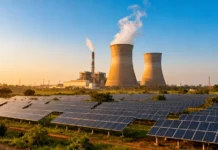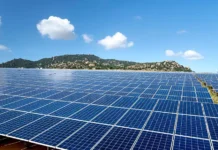The decreasing costs of solar and wind power have heightened their importance as a safeguard against wholesale power price changes. Nonetheless, because of market dynamics and contract structures, American consumers don’t always experience reduced bills. This insight stems from a recent Lawrence Berkeley National Laboratory- LBNL study that quantified utility-scale solar and wind costs in the U.S. compared to wholesale market prices.
The study evaluated the net market value of solar and wind over time. This value is defined as the gap between the expense of replacing solar and wind energy by buying electricity in wholesale markets and the levelized cost of solar and wind electricity- LCOE.
With solar and wind LCOEs continually dropping and wholesale markets experiencing considerable volatility, especially in 2021 and 2022, the study revealed an improvement in the net market value of these renewable energy sources. For instance, in 2022, solar energy created a net value of $2.1 billion in the U.S., while wind energy contributed $100 million.
These findings suggest savings for buyers and the possibility of lowering consumer energy bills. However, the report indicated that whether end-users benefit from reduced bills depends on contractual structures and the buyer’s or customer’s sophistication.
In long-term power purchase agreements- PPAs with fixed prices, the hedge value of solar and wind, in the form of lower bills, is likely passed on to customers. Conversely, for fixed-price unbundled renewable energy certificates- RECs, consumers usually pay a premium, meaning they are less likely to experience the hedge value of solar and wind.
According to the LBNL report, the better economics of solar and wind are prompting some purchasers to reconsider their contracting methods to ensure that retail consumers, especially residential customers, capture more of the hedge value provided.
The report recommended that more electricity buyers should adopt contracting structures that allow the improved economics of solar and wind to benefit end consumers, such as physical and virtual PPAs and index-based REC contracts that offer hedge benefits when wholesale prices rise.




































